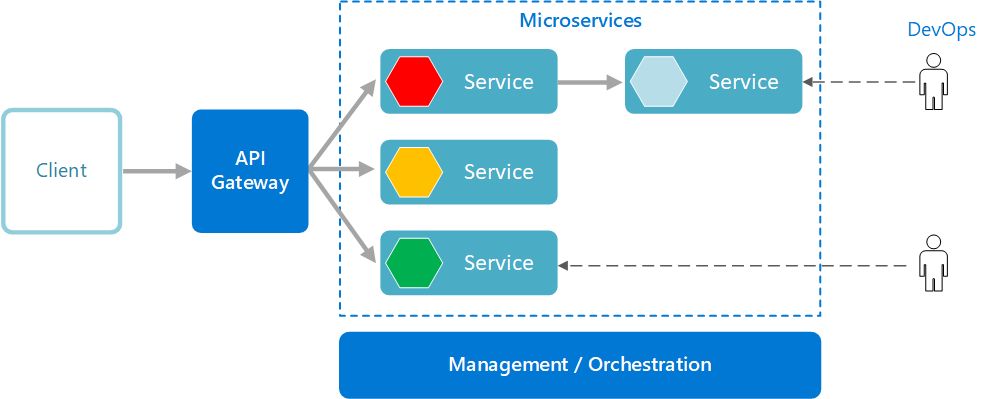 Backend Development
Backend Development Golang
Golang How do microservices implement interfaces between services to work together?
How do microservices implement interfaces between services to work together?With the rapid development of the Internet industry, more and more companies are beginning to adopt microservice architecture to adapt to the rapidly changing market needs. A characteristic of the microservices architecture is that a large application is split into multiple small services, each of which can be deployed, run, and maintained independently. However, since each service is independent of each other, these services need to communicate with each other to complete the integration of business logic. This article will explore how microservices implement interfaces between services to work together.
1. Interface collaboration in microservices
In the microservice architecture, each service has its own service interface, and these interfaces are exposed to other services through RESTful API and other methods. Therefore, interface collaboration is required between services to achieve integration of business logic.
In the microservice architecture, interface collaboration has the following aspects:
- Interface design collaboration
Since each service is independent of each other , so the interface design between services needs to be completed collaboratively. When designing the interface, the dependencies between services need to be taken into consideration to ensure the reliability and scalability of the interface. In addition, the documentation of the interface also needs to be updated in time to facilitate other developers to understand and use it.
- Interface development collaboration
Interface development also needs to be completed collaboratively. When developing interfaces, common standards and best practices need to be followed to ensure the compatibility and maintainability of the interface. At the same time, a unified code base and version control system need to be established to ensure interface consistency.
- Interface test collaboration
Interface testing is also an important part of interface collaboration. When testing interfaces, you need to take into account the dependencies and possible interactions between different services. Therefore, a corresponding test environment and automated testing process need to be established during the testing process to ensure the quality and stability of the interface.
2. Service discovery in microservices
In the microservice architecture, service discovery is the basis for communication between services. The purpose of service discovery is to enable services to perceive and collaborate with each other. In service discovery, each service will register its own service information with the registration center, including service name, host IP, port number, etc. Other services query the service information in the registration center and then communicate with the corresponding services based on this information.
There are many ways to implement service discovery, such as:
- ZooKeeper
ZooKeeper is a distributed coordination service that can be used to coordinate and Manage services in distributed systems. In ZooKeeper, each service creates a ZNode that contains all the information for the service. Other services can discover the target service by querying the ZNode in ZooKeeper.
- Consul
Consul is also a service discovery tool that can be used to register and discover microservices. Consul exposes services using an HTTP API and enables users to use DNS queries. The target service can be discovered by other services by querying Consul's HTTP API or DNS servers.
- etcd
etcd is a highly reliable distributed key-value storage system that can be used for service discovery and configuration. In etcd, each service creates a leaf node, and other services can discover the target service by querying etcd's nodes.
3. Interface design in microservices
In microservice architecture, interface design is very important. The interface is a bridge for communication between services, and its good design can improve the efficiency and reliability of collaboration between services. When designing the interface, you need to pay attention to the following aspects:
- Interface name
The interface name should be concise and clear, and can accurately express its function. Interface names should contain verbs and nouns, such as getUser, etc.
- Interface request method
Interface request method includes GET, POST, PUT, DELETE, etc. When designing the interface, you need to choose the request method that best suits the current business scenario. Generally speaking, the GET method is used to obtain data, the POST method is used to create new resources, the PUT method is used to update resources, and the DELETE method is used to delete resources.
- Interface request parameters
Interface request parameters include path parameters, query parameters, request body and request headers. When designing the interface, you need to consider the necessity and optionality of request parameters, as well as the uniformity of the data format.
- Interface response
Interface response includes status code, response body and response header. When designing interface responses, sufficient information and error handling mechanisms need to be included.
5. Interface version management in microservices
In microservice architecture, interface version management is also very important. Upgrading and adjusting the interface will affect the normal operation of other services, so you need to operate with caution. When managing interface versions, the following aspects need to be considered:
- Interface version number
Each interface requires a version number to identify different versions of the interface . The version number is in a semantic manner, such as v1, v2, etc.
- Interface Compatibility
When upgrading the interface, you need to consider the compatibility of the interface version. If an incompatible upgrade is required, other services and clients need to be notified in a timely manner to make corresponding adjustments.
- Interface rollback
After upgrading the interface, if an exception or problem occurs, the interface needs to be rolled back in time to ensure the normal operation of the system.
6. Interface security in microservices
Interface security is an important issue that cannot be ignored in microservice architecture. The security of the interface is mainly reflected in the following aspects:
- Interface authentication
For sensitive interfaces, identity verification and authentication are required. Typically an OAuth 2.0 based authentication scheme is used to ensure the security of the interface.
- Data Encryption
For data that needs to be kept confidential, it needs to be encrypted. Data can be encrypted and decrypted using encryption algorithms to ensure data security.
- Prevent SQL injection attacks
When using SQL queries in the interface, you need to pay attention to preventing SQL injection attacks. You can use precompiled SQL statements or parameterized queries to avoid SQL injection attacks.
In short, interface collaboration in microservices needs to be comprehensively considered from the aspects of interface design, service discovery, version management and security to achieve communication and collaboration between services, and ultimately bring better business performance, reliability and scalability.
The above is the detailed content of How do microservices implement interfaces between services to work together?. For more information, please follow other related articles on the PHP Chinese website!
 应用实例:使用go-micro 构建微服务推荐系统Jun 18, 2023 pm 12:43 PM
应用实例:使用go-micro 构建微服务推荐系统Jun 18, 2023 pm 12:43 PM随着互联网应用的普及,微服务架构已成为目前比较流行的一种架构方式。其中,微服务架构的关键就是将应用拆分为不同的服务,通过RPC方式进行通信,实现松散耦合的服务架构。在本文中,我们将结合实际案例,介绍如何使用go-micro构建一款微服务推荐系统。一、什么是微服务推荐系统微服务推荐系统是一种基于微服务架构的推荐系统,它将推荐系统中的不同模块(如特征工程、分类
 使用go-zero实现微服务的动态路由Jun 22, 2023 am 10:33 AM
使用go-zero实现微服务的动态路由Jun 22, 2023 am 10:33 AM随着云计算和容器化技术的普及,微服务架构已成为现代化软件开发中的主流方案。而动态路由技术则是微服务架构中必不可少的一环。本文将介绍如何使用go-zero框架实现微服务的动态路由。一、什么是动态路由在微服务架构中,服务的数量和种类可能非常多,如何管理和发现这些服务是一项非常棘手的任务。传统的静态路由并不适用于微服务架构,因为服务数量以及运行时的状态都是动态变化
 go-zero与Docker的完美结合:高效构建容器化的微服务架构Jun 22, 2023 am 09:08 AM
go-zero与Docker的完美结合:高效构建容器化的微服务架构Jun 22, 2023 am 09:08 AM随着互联网的快速发展,微服务架构渐渐成为了业界的热门话题,而Docker作为容器化的利器,更是被广泛应用于微服务架构中的部署和运维。而今天我要介绍的是另一款非常优秀的微服务框架——go-zero,以及它与Docker的完美结合。一、什么是go-zerogo-zero是一款由饿了么点评公司开源的,基于Go语言构建的微服务框架。它的特点是高性能、易于使用和功能全
 自动扩展的go-zero微服务架构Jun 22, 2023 am 11:14 AM
自动扩展的go-zero微服务架构Jun 22, 2023 am 11:14 AM近年来,随着云计算和微服务架构的普及,越来越多的企业和开发者开始使用微服务架构来搭建自己的应用。然而,微服务架构也存在着一些问题,比如服务的扩展、管理、监控等方面。为了解决这些问题,很多开发者开始使用go-zero微服务框架。go-zero是一款基于Go语言开发的微服务框架,它提供了一系列的组件和工具,帮助开发者快速构建、管理和扩展自己的微服务。其中最重要的
 有哪些适合于Go语言开发的微服务框架?Jun 03, 2023 am 08:41 AM
有哪些适合于Go语言开发的微服务框架?Jun 03, 2023 am 08:41 AM随着微服务架构的兴起,越来越多的开发者开始探索如何将应用程序拆分成小而独立的服务,并将它们组合成一个更大的应用。Go语言因其高效、简洁和并发性能出色的特点,成为了其中一个热门的用于微服务开发的语言。而本文将介绍一些适合于Go语言开发的微服务框架。GinGin是一款快速、灵活和轻量级的Web框架,具有丰富的功能和优雅的API。它通过HTTP路由机制和中间件来帮
 Python 对微服务架构有效吗?May 18, 2023 pm 09:28 PM
Python 对微服务架构有效吗?May 18, 2023 pm 09:28 PM在选择适合微服务架构的编程语言时,Python是其中一种选择。它具有活跃的社区、更好的原型设计以及在开发人员中受欢迎等好处。它有一些限制,因此可以使用其他语言来避免它们。快速开发架构风格回顾与统计两种主要的开发架构风格是单体架构和微服务架构。Monolithic具有一体化的原则,并作为一个整体结构发挥作用,最适合小型开发项目或初创企业。当一个平台增长并且业务需要复杂的应用程序时,将其拆分为微服务架构是合理的。一些语言和框架更适合构建微服务架构。Java、Javascript和Python被列为微
 PHP中的KubernetesMay 26, 2023 pm 10:10 PM
PHP中的KubernetesMay 26, 2023 pm 10:10 PMKubernetes是近年来非常火热的容器编排和管理工具,PHP作为一种非常流行的Web开发语言,也需要适应这个趋势,通过Kubernetes来管理自己的应用。在本文中,我们将探讨如何在PHP应用中使用Kubernetes。一、Kubernetes概述Kubernetes是由Google公司开发的一个容器编排和管理工具,用于管理容器化应用。Kubernete
 如何使用Go构建微服务架构的应用Jun 17, 2023 am 09:39 AM
如何使用Go构建微服务架构的应用Jun 17, 2023 am 09:39 AM随着软件开发的不断发展,微服务架构已经逐渐成为了一种非常流行的架构模式。而在微服务架构中,Go语言作为一种高性能的编程语言也逐渐受到了越来越多的关注。那么,如何使用Go构建微服务架构的应用呢?下面将通过几个步骤来详细介绍。1.选择合适的Go框架选择合适的Go框架非常重要,它能够让我们更快地构建出一些基础服务,比如HTTP服务、日志服务、数据库服务等等。当前,


Hot AI Tools

Undresser.AI Undress
AI-powered app for creating realistic nude photos

AI Clothes Remover
Online AI tool for removing clothes from photos.

Undress AI Tool
Undress images for free

Clothoff.io
AI clothes remover

AI Hentai Generator
Generate AI Hentai for free.

Hot Article

Hot Tools

Safe Exam Browser
Safe Exam Browser is a secure browser environment for taking online exams securely. This software turns any computer into a secure workstation. It controls access to any utility and prevents students from using unauthorized resources.

ZendStudio 13.5.1 Mac
Powerful PHP integrated development environment

SublimeText3 English version
Recommended: Win version, supports code prompts!

Zend Studio 13.0.1
Powerful PHP integrated development environment

Dreamweaver CS6
Visual web development tools





